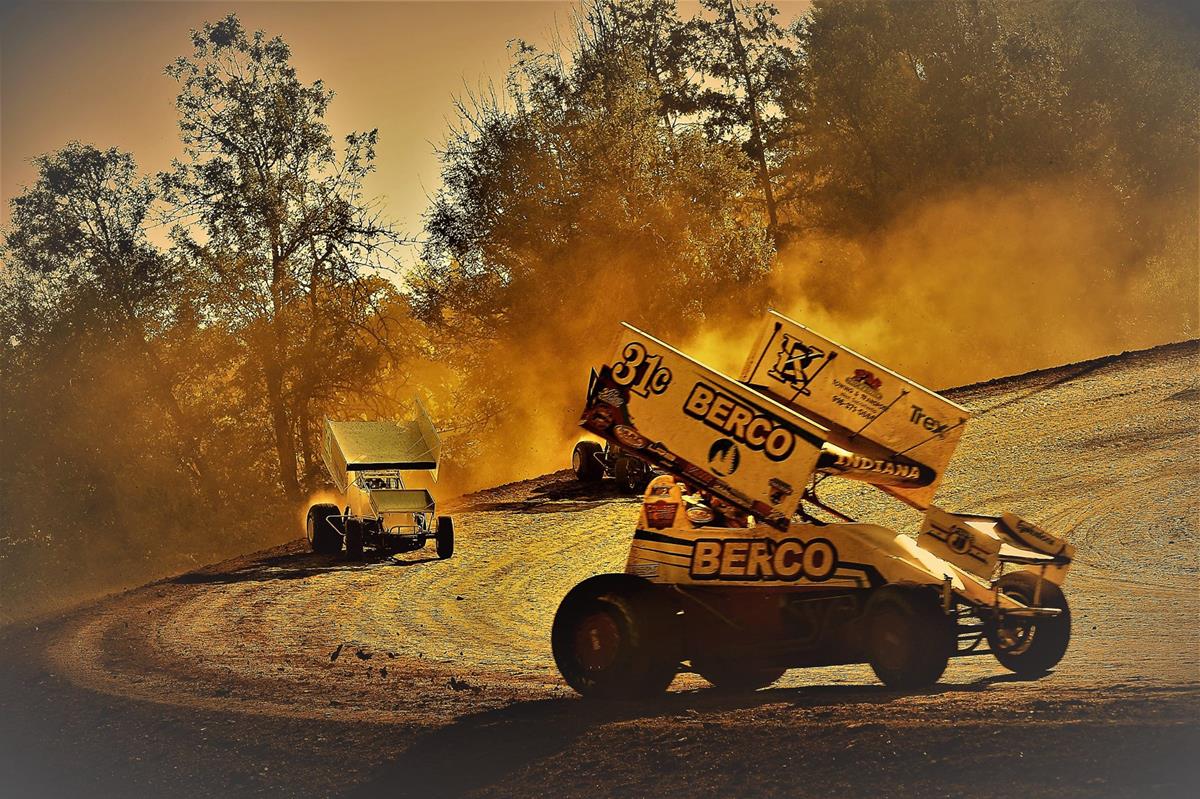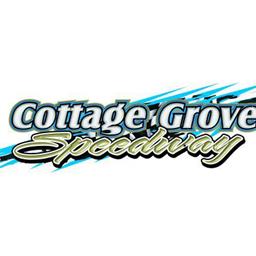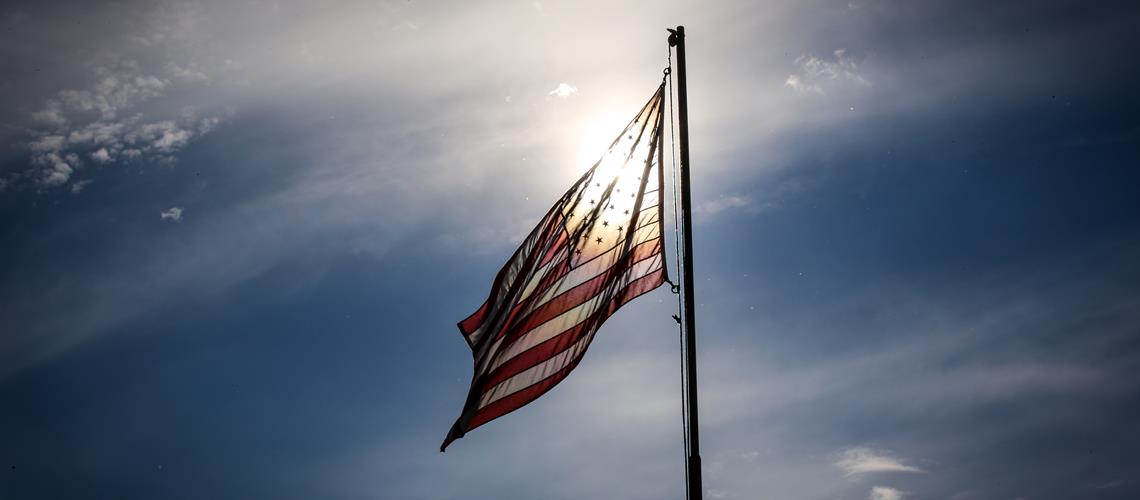

6/28/2018
Cottage Grove Speedway
2018 Western Sprint Tour Speedweek Driver Information! Presented by Champion Oil, HighLine Performance, & BC Motorsports
2018 Western Sprint Tour Speedweek Driver Information!
Presented by Champion Oil, HighLine Performance, & BC Motorsports
Photo Courtesy Wings Off Photography
Summer is flying by and Speedweek Northwest is almost here! 6 nights of 360 racing at 5 of the best racetracks in the Northwest! Below you will find the schedule, nightly payout, point fund info, the format, and rules. If you have any questions or need further information please call Heather at 541-729-8666. See you all for 2018 SPEEDWEEK!!
Schedule
7/9/18 – Siskiyou Motor Speedway – Yreka, CA
7/10/18 – Coos Bay Speedway, Coos Bay, OR
7/11/18 – Willamette Speedway – Lebanon, OR
7/12/18 – Sunset Speedway – Banks, OR
7/13/18 – Cottage Grove Speedway – Cottage Grove, OR
7/14/18 – Cottage Grove Speedway – Cottage Grove, OR
Nightly Payout
1st - $2000.00
2nd - $1200.00
3rd - $1000.00
4th - $800.00
5th - $600.00
6th - $500.00
7th - $400.00
8th - $375.00
9th - $350.00
10th - $325.00
11th out the back - $300.00
B Main - $100.00 to all non-transfer cars
Point Fund
1st Place - $1000.00 – Sponsored by Champion Oil
2nd Place - $600.00
3rd Place - $400.00
4th Place - $300.00
5th Place - $200.00
In addition to this Point Fund there will also be a BC Motorsports/HighLine Performance Hard Charger of the Series Bonus paid to the driver that passes the most cars in A Main Event Action. Thanks to HighLine Performance and BC Motorsports this will pay at least $500.00 and stickers will be sold all week with the money being added in, this bonus will top out at $800.00 and additional money will go towards Longest Tow and then to the point fund.
Format
Qualifying – Every car will get 2 laps of qualifying. Order will be determined by pill draw.
Qualifying points will be awarded as follows:
50 points to fast time and down by 1 point
Qualifying points are solely for line-up purposes and not end of year standings
Qualifying will be split into 2 groups when there are 30 or more cars
Heat Races – Heat races will each have a 6 car invert, fast time will start in position 6 in the first heat.
Heat Race points will be awarded as follows:
Heat race winners will receive 50 points as go down by 3 points
Heat race points will be added to qualifying points and are solely for line-up purposes and not end of year standings
8 laps
Trophy Dash – The top 6 in points will do a random draw for a trophy dash. The finish of the dash will determine the front 6 starting spots.
5laps
Main Event – The top positions will be determined by the trophy dash. Everyone else will start heads up by points with 7th place starting in 7th position. 16 cars will be locked into the A Main
30 laps
B Main Events – All cars not locked into the A main will start heads up based on total points in the B Main event. 17th will start on the pole of the B Main event. If 1 B Main is ran 4 will transfer to the A Main. If 2 B Mains are ran 2 will transfer from each. 17th in points will start on the pole of B Main 1 and 18th in points will start on the pole of B Main 2.
12 laps
***All ties will be broken by qualifying time
Rules
Safety Rules
- Mandatory Safety Equipment
A) Snell SA2010 minimum helmet
B) SFI Fire suit at least 2 layers thick
C) Fire resistant gloves
D) Fire retardant racing shoes
E) Arm restraints or full containment seat
F) Right side head net
G) Driveline hoop or restraint (no open driveline). Must utilize a .065 steel hoop welded or bolted to the chassis. Rear cross member must be contructed to .083
H) High back (stock car style) seat
I) Padded knee guard
J) All cars to be equipped with fuel bladders
K) 3” 5 point seat belts installed in accordance to manufacturers suggested installation
L) Must use beadlock on right rear at all times
M) Drag link must be tethered to the frame - Suggested Safety Equipment
A) Rock screens with a minimum .090 thickness
B) Head rest with padding
C) SFI flame retardant underwear, head sock, and foot socks
D) Left window net
E) Helmet restraint
F) Neck Collar
G) Steel tie rod and drag link with steel heims
H) Drivers seat fuel/fume deflector
I) 2014 Driveline restrain
Weight Rules
All cars with ASCS specifications cannot weigh less than 1475 pounds with driver at post race inspection. All other cars must weigh a minimum of 1550 pounds with driver at post race inspection. Random weigh ins will be at the discretion of the tech official and/or race director. If at any time you are told to scale you must do so immediately following the race, going to your pit stall first will result in disqualification. Scales will be available for pre-race weighing.
If you fail to make the minimum weight requirement after being rolled across the scales twice you will be scored last for that event.
Chassis Rules - Sprint type chassis allowed. All roll cages must be made of 1-1/2x.095 wall 4130 chromemoly tubing, securely welded. Maximum width of cage at the top is 27”I.D. The following measurements are minimums. Only areas indicated will be subject to technical inspections. Suggested material 4130 normalized.
A) Top rails: 1-1/2x.095
B) Bottom rails: 1-3/8x.095 or 1-1/2x.083
C) Roll cage uprights: 1-3/8x.083
D) Roll cage top cross members: 1-1/2x.095
E) Upper rails: 1-3/8x.083
F) Rear end safety bar: 1x.038
G) Brace: 1-14x.065
H) Steel torque tube safety bar: 1x.065 - Roll bar cage must be 2” higher than the drivers head and be padded subject to the race director’s approval.
- Hoods are required. Maximum of a 1” lip on turn outs and body panels.
- Tech approved belly pans or floorboards. Throttle pedal must have toe strap and return springs on linkage and at injectors or carburetor.
- All cars will have a sprint style fuel tank with bladder securely mounted (not by bladder cover plates) and must be able to contain 24 gallons of fuel. No plastic fuel lines or fittings. Tank must be vented in a manner that it will not leak if upset. No alteration or modification to fuel cell. Must be one piece construction of cross link polyethylene plastic. No carbon fiber fuel tanks.
- Suspension optional, no cockpit adjustable and have one working shock per wheel. Steering system types are optional and need to be approved by race director.
- Wheel base minimum of 83” with a maximum of 90”. Tread minimum of 48” wide, center to center. Wheel and tread width optional; single tire and wheel only.
8)All cars must have a number in a contrasting color. Top wing number mandatory and must be at least 16” high.
9)Foot operated, hydraulic brakes required. Front wheel brakes optional. Steel, aluminum, or titanium rotors only. - Wheel must be approved for racing.
- Front, rear, and side nerf bars, made of a minimum of 1x.065 stainless or 4130 normalized material, required at the beginning of the race program. Cars must have rear nerfs securely attached to finish a race. Front and side nerfs lost due to damage during the racing event is acceptable. All nerfs and bumpers will be attached with a minimum of 3/16” steel alloy fasteners. No pop rivets. Subject to race director’s approval.
- Lettered, on/off toggle or push/pull switches
- No mirrors
- No radios
15)Body panels must have a side opening of 12” minimum at any point and 21” minimum front to rear at any point. Max of 1” lip on turn outs and body panels
Engine Rules - 360 cubic inch (maximum) standard steel blocks only. Aluminum or steel heads permitted. Valve angle will be 23 degrees + 2 degrees, Ford and Chrysler are the exception. Injection nozzles in heads not permitted. Maximum of 8 injection nozzles in manifolds only. Internal parts open. Dry sump systems permitted. Carburetor or fuel injection allowed. No blowers, superchargers, or nitro-methane fuels allowed. Fuel may be checked and must coincide with fuel at the track.
A) The valve angle and injection size will be checked at the time the engine is pumped.
B) Injectors must be individual port per cylinder containing one nozzle injection design and shall not exceed 2-3/16”I.D. If downsized stacks or a restrictor are used, there must be at least 3” of restriction to 2-3/16I.D. If Ford or Chrysler engine is used, imjectors must be sleeved at 2.100I.D.
C) Chrysler: W7 or W9 head. No porting or polishing. 2.100 intake and 1.600 exhaust.
D) Ford 1-7/8 and Chrysler 1-3/4 primary exhaust tubes, minimum 29” long.
E) ASCS Head Rules: Spec heads part #27-211(Chevrolet), #27-223 (Ford), and #27-222 (Mopar). ASCS stamp may not be altered in any way. Intake opening no larger than original opening except: Intake port floors and sides may be ground or polished ¾ of an inch or no further into the port than the closest edge of the closest letter of the ASCS logo. During this polishing, the left side of the letter “A” is sometimes inadvertently brushed with the polish wheel, this is permissible as long as the letter is still intact. During polishing of inlet port, polish marks may go slightly further than the ¾” mark. Intake port at no time may exceed 215 cubic centimeters. Intake port polishing will be allowed no more than 1-1/2 inches below the bottom of the original seat ring on the back side of the bowl area and no more than one inch on the short side. Polishing will be allowed in the combustion chamber area to avoid hot spot chaffing. Polishing will be allowed in exhaust ports , as long as the original ASCS logo is not affected or port shape is not altered substantially. Absolutely no intake or exhaust port relocation, raising, enlargement, or reshaping of any type. Valve angle and placement may not be altered in any way. ASCS checking fixtures to check the above specifications and dimensions will be utilized. Any internally-repaired ASCS spec head must be re-certified by Brodix. - No titanium crankshafts or rods will be allowed. There must be an inspection plug in the oil pan. Either a #12AN fitting or a 1” pip plug. If a car is to be inspected and there is no inspection plug in the oil pan it will be required to pull oil pan for inspection.
- The race director has the right to pump any car in the pits at any time during the night. The top three finishers any night may be pumped.
- When checking an engine’s legality, pumping will prevail. CGS will maintain all equipment used for inspection. If the pump shows a car illegal, a tear down is an option to prove legality.
- Owners found to have illegal engines or that refuse to tear down their engines will forfeit all season points up to and including that night. They will also forfeit any money for said night and a $500.00 fine will be imposed. Owner shall be suspended from racing until the fine is paid.
- Technology: No traction control devices of any kind allowed. No wheel speed sensors. No electronic fuel injection.
Wing Rules
Note: Intent on the wing rule is to comply with ASCS/WoO specs, except as noted below - Top wing mandatory, maximum of 25 square feet with 30” side panels. Maximum center foil width 60”. The deepest point allowed in the top surface of the wing will be 2-1/2” measured from top front of wing to the front edge of the one inch turn up at the rear edge (or to the rear edge if there is no turn up). Top surface of the wing measuring must be flat.
- Side panel maximum length is 72”. Side panels attached to the wing must be fabricated flat, as to have no turn outs or flaps made of more than two inches of material on the front or rear panel and no more than 1-1/4 inches on the top or bottom sideboard. All top and front wings must be fabricated of metal alloys only. No fiberglass, carbon fiber, or other similar materials may be used in the basic framework (center foil and side panel) of the wing.
- No wicker bills or additions to center foil. 1” turn up on 90 degree angle allowed at rear center foil (maximum). Center foil must be one piece. No split wings or bi-wings. Top wings must not extend beyond or outside of rear tires. 1” wicker bill on flat top. No wicker bill on a 2-1/2” dish.
- Nose wings optional, if used maximum is 6 square feet.
Exhaust Rules - Mandatory: Must be less than 95 decibels or below at 100 feet or YOU WILL NOT RACE!!
- Mandatory: Mufflers- Spin Tech or Flowmaster, Loback 24” inner core note, Spin Tech or Flowmaster must be the big muffler no small Spin Tech or Flowmaster’s allowed. Part #1545, Schoenfeld part #14272735-78
- No Supertraps
Tire Rules
Right rear tire ASCS Medium or Racesaver 104x16. All numbers and identification on the right rear must not be altered and any alterations made will result in disqualification of that tire. Hoosier tires msut be ran on all 4 corners. As a policy Cottage Grove Speedway officials will NOT allow a one week grace period for cars that do not comply to the Hoosier tire rule. Right rear Hoosier must be on car prior to entering track
Tech official will have the final decision on any rule in question. It is the policy of Cottage Grove Speedway that any car in violation of the above rules will be disqualified and penalized with a loss of points and payout and may be fined at the discretion of the tech official. A one race grace period may be allowed at the discretion of the tech official. A grace period will not apply to tires and/or weight.
Submitted By: Heather Boyce




